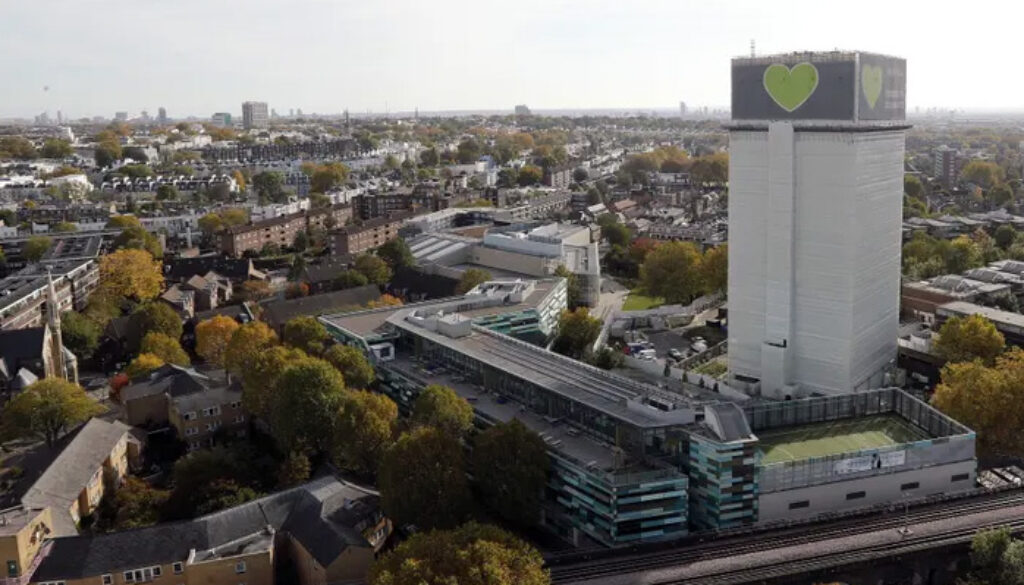Cladding and Multistorey Apartments: An Overview
In the aftermath of the Grenfell Tower fire in June 2017, the UK government commissioned an Engineer, Dame Judith Hackitt, to undertake an independent review of Building Regulations and fire safety.
Dame Judith’s final report resulted in the Building (Amendment) Regulations 2018 in England, and the Building (Amendment) (Wales) Regulations 2019 in Wales, which amended or introduced a number of regulations in response to the legislative gaps highlighted by this tragedy.
From December 2018, the regulations apply to all new residential buildings over 18 metres or six storeys in height.
However, transitional provisions confirm that the changes do not apply where an initial notice, or building notice, or full plans were given to the Local Authority prior to 21 December 2018 and work began before 21 February 2019.
The legislation allows for local authorities to intervene in private buildings and carry out emergency work in respect of cladding. (Local authorities do have existing powers under the Building Act 1984 to take enforcement proceedings where a building is unsafe).
This had a serious impact on sales of multi-storey apartments.
In an attempt to counteract this – and to reflect the changes in the Buildings Regulations – the Royal Institute of Chartered Surveyors (RICS), the Building Societies Association and UK Finance have developed an industry-wide process to be used by valuers, lenders, building owners and fire safety experts when they are valuing high-rise properties: this is known as the External Wall Fire Review.
It is intended to regularise the assessment of, and restore market confidence in, multi-storey apartments. It also allows owners in affected buildings to check that the building complies with the requirements of the Buildings Regulations.
The External Wall Fire Review requires a fire safety assessment on the external wall materials to be conducted by a qualified and competent professional and for the assessment to be recorded using Form EWS1.
If an external wall is found to have combustible materials, a chartered fire engineer must be appointed to carry out a more thorough assessment.
If the assessor deems the fire risk to be acceptably low, buyers and lenders may be reassured.
If the fire risk is high, and remediation work is needed, the freeholders, landlords and managing agents are advised accordingly. This is also intended to provide assurance for buyers and lenders that the building complies with current fire safety legislation and with the Building Regulations.
Form EWS1 is used for recording what assessment has been carried out.
It is only for use in respect of:
- external wall construction,
- of a residential apartment building,
- where the highest floor is 18m / six storeys or more above ground level (although some lenders are requesting it for lower buildings), or there are more specific concerns as to combustible cladding.
Obtaining Form EWS1 is the responsibility of building owners, rather than that of a Local Authority’s Building Control Department.
However, if the building owner will not commission the EWS1, the matter can be referred to the local authority or the fire and rescue service.
The cost of doing this will be passed back to the freeholder / landlord / managing agent.
Form EWS1 is for the sole and exclusive use of the commissioning organisation (landlord, freeholder, or managing agent) and cannot be relied upon by third parties including a buyer or lender.
It is therefore supplied only to aid the buyer and the valuer to decide whether to proceed, although the third party can approach the assessor’s organisation for approval to rely on the data.
Form EWS1 is valid for a period of 5 years from the date on which it is signed.
However, it will need to be reassessed if there have been any significant changes to the walls or the coverings attached to them.
As such, it only provides the assessment in the light of guidance which was current at the time of the assessment.
Preparing Form EWS1 involves physically invasive checks into the wall systems. It typically costs anywhere between £500 and £10,000.
Freeholders and management companies are often reluctant to fund this and some sellers may be forced to consider volunteering to pay, just so that they can move.
Management Companies / Landlords may not have large sinking funds to pay for the replacement cladding, so they may try to obtain funding from owners under other statutory provisions.
Form EWS1 has two options for use: Option A, where external wall materials are unlikely to support combustion, and Option B, where combustible materials are present in external walls.
Option A
Option A on the EWS1 will tell you that:
- The assessor meets the required standards (a member of a relevant professional body within the construction industry, but not necessarily with expertise in fire engineering).
- The external walls meet the limited combustibility requirements,
- There are no attachments which are significantly combustible, or
- There is an appropriate risk assessment of the attachments that confirms that no remedial works are required, or, where neither of those two options apply, there may be potential remediation costs.
Option B
Option B on the EWS1 will tell you that:
- The assessor meets the required standards (that they have expertise in the fire risk of external wall materials and are a member of a professional body that deals with fire safety in the built environment).
- The fire risk is sufficiently low that no remedial works are required, or
- An adequate standard of safety is not achieved, and interim and remedial measures have been advised to the person or organisation who commissioned the report.
Any new regime will take time to become streamlined, so these new procedures may cause delays in the conveyancing process. For example, this may be because:
- There are not enough qualified inspectors to carry out the work.
- It is difficult for the existing inspectors to obtain professional indemnity insurance to carry out the work.
- The amount of building stock which needs to be assessed is huge and the time it will take to implement the new regime is uncertain.
- Some inspectors have said that inspecting just one block of flats can take between two weeks and a month.
The Association of Residential Managing Agents (ARMA) have suggested that a delay of eight months might be realistic.
This may cause major problems in conveyancing transactions. Long delays in getting the completed EWS1 could mean that mortgage offers will expire.
Of the 315 residential blocks and public buildings that had been identified at the end of 2019 as having relevant cladding, only 135 had been subject to any form of remediation.
For a lot of the EWS1 work undertaken there will also be remediation work to carry out. In general, the building owner or its management company is responsible for ensuring that the building meets legal standards, but it will often be the tenants who bear the cost.
In practice, this is likely to mean that, for a buyer or seller of a clad property:
- An EWS1 will be required.
- There may be a delay in obtaining the EWS1 which may, in turn, impact on the availability of mortgage finance.
- The freeholder / management company / landlord should be asked to provide evidence of any remediation work, how this is to be funded, and for copies of any building regulations approval documents.
- They must seek the advice of a professional surveyor.
In addition, for a buyer of a clad property:
- This must be reported to any lender.
- Enquiries should be made as to whether the cladding / fire risk is covered by the buildings insurance.
- Even if remediation works are not already funded or underway, the buyer should consider seeking a substantial retention against any such works for a suitable period of time, particularly where there is no sinking fund.
- Despite the availability of government funding for remediation, the final responsibility to pay for the work may fall on a buyer, and this may cause significant issues when coming to sell the property.
For further information or help, please contact one of the members of the Property Team; Susannah Taylor, Andrew Williamson or David Thorp.



